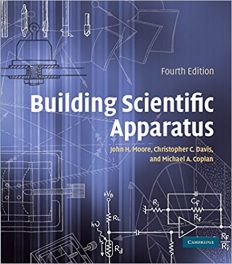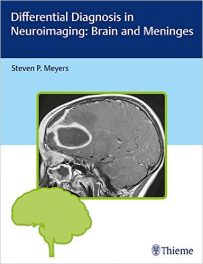Authors: Anthony A. Miller, Albert F. Simon and Rachel A. Carson
Publisher: McGraw-Hill – 494 pages
Book Review by: Nano Khilnani
This book is a study aid and practical guide for those individuals preparing to pass the Physician Assistant National Certification and Recertification Examination.
It comes with a practice CD attached on the inside cover of the book.
This nearly 500-page guide contains 1300 practice questions, correct answers to each, and explanations on why they are the correct ones. The questions are presented in the same multiple-choice format as seen in the national examination, which are the “one best answer – single item” questions.
In that national exam, you are given a question and you have to pick the best answer to that question. The better your knowledge and understanding of that particular medical specialty, the more likely you are to pick the right answer.
Be sure to read the Introduction of this book. It explains to you how to get the most from the book It explains to you the basics and structure of the exam and how to answer each question. Not only does it give you the correct answer to each question, it also explains to you why it is the correct one. It also gives you sources of in-depth information on that area of medicine that you can tap into, to further your knowledge.
This book is organized into seven sections containing 23 chapters. Section I has 12 chapters covering cardiology, dermatology, endocrinology, gastroenterology, hematology and oncology, HIV-AIDS, infectious disease, nephrology, neurology, pulmonology, and rheumatology. Section II is on obstetrics and gynecology; Section III on pediatrics; Section IV on pharmacology and therapeutics; Section V on psychiatry; Section VI on various kinds of surgery; and Section VII on preventive medicine and basic science.
The section on surgery includes emergency medicine, general and vascular surgery, orthopedics, otolaryngology and ophthalmology, and urology.
It has long been known that passing an exam requires not only thorough knowledge and understanding of the material of a given subject but also a mastery of test-taking skills. Accordingly, the first chapter with 11 pages is devoted entirely to helping you acquire such skills, along with bits of insight, to best prepare for taking the exam and do well on it.
Entitled “Test-Taking Skills: Tips and Techniques,” this chapter provides you practical advise on what to do when preparing for the exam and what to do during the exam. You may know or think you know much of the material but if you have never practiced taking this exam, you may perform badly and get a low score.
“Reading and reviewing without active practice are rarely sufficient,” write the authors of this first chapter, Anthony A. Miller and Robert W. Jarski. They emphasize that practice in taking the exam and getting the correct answers is critical to a good or at least a successful outcome – a pass score. Practice makes perfect, remember?
One of the important suggestions they give you to properly prepare for the exam is:
get into the practice mode! Another suggestion is to study the subjects first in which you are weak: the attached CD helps you determine which are your areas of weakness among the 23 medical specialties covered in the exam.
A third important suggestion is to schedule exam preparation time, setting aside specific hours in the day each week to review the material and answer the multiple-choice questions in the exam. Regular hours of study and test practice over several months is best. This will prevent you from having to cram for the exam in the end, the authors advise you.
Each chapter has the same basic structure as the others. It has three basic components: the questions, answers and explanations, and a large list of references to further your knowledge.
In the first component, the numbered questions are presented to you in the same format as you will encounter in the national exam. In the second component of each chapter, entitled “Answers and Explanations” the correct answers to the numbered question are presented to you. But as we wrote before, an explanation as to why the correct answer is the best one is provided to you. In the third component, an alphabetical list of authors is provided to you, along with references to the titles of the articles and books they have written.
An example of the questions and the correct answer is presented below. This question is the first one in chapter 17, entitled “Emergency Medicine.”
Which of the following interventions is the most important factor in surviving an out-of-hospital cardiac arrest?
A. Immediate airway control with intubation
B. Early defibrillation
C. Aggressive management of hypotension
D. Epinephrine usage
E. Rapid transport to appropriate facility.
Most people who are not in the medical world would probably say the correct answer is B or early defibrillation. When you turn to the “Answers and Explanations” section at the end of the questions, you find out that B is indeed the correct answer.
The explanation provided after the correct (B) answer: “Survival of pre-hospital cardiac arrest is most notably improved by defibrillation and good cardiopulmonary resuscitation (CPR). Emergent airway management, the use of epinephrine (a drug that raises blood pressure) prompt treatment of hypotension (low blood pressure) and rapid transport to the most appropriate facility only moderately increase survival rates when compared with early defibrillation or CPR. (Ornato, 2004, p. 65)
In our opinion, this looks like an overall excellent preparation book – based on its well-organized structure and presentation – for those who want to do well in the aforementioned Physician Assistant examination.
It covers the main specialties in medicine and surgery, has a large number (1300) of questions for test practice, and most importantly, the format of questions and answers presented in this book, as the authors of the first chapter state, are the same as you will find in the national exam. By doing the practice tests presented in this guide, you are likely to perform much better in the exam for physician assistants.






